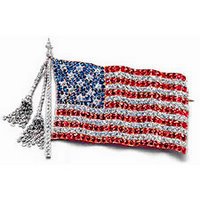November 30, 2006
V&A da Vinci "Experience Experiment Design"
November 21, 2006
London Weather - Rainbows and Hailstorms
Whinge Whinge Whinge (another great British vocabulary word)
November 19, 2006
Museum Marathon
Note: No museum allowed photography so all pictures are from the museum websites.
Royal Academy of Arts - Chola Bronzes and Rodin
The Chola (South Indian dynasty) sacred bronzes (9th - 13th centuries) were exquisite and everything has a special meaning.
Kris was surprised at how much he enjoyed the Rodin sculptures including The Thinker, The Kiss (shown) and the Gates of Hell.


Somerset House Gilbert Collection - Bejewelled by Tiffany (1837-1987), Pietre Dure and Micromosaics, and Snuff Boxes
Carrie learned a lot about Tiffany during an AWC tour of the exhibit - so she is ready to pay a visit at the next Tiffany store she sees!
Tiffany established a set of principles that are still followed today. There is a broad range so "everyone" can afford something. And there are those beautiful boxes! Credit is given to high profile designers. As the years went by, Tiffany made his stores more and more American such as even importing wood from California for his shop in Paris.
Most of all, Tiffany creatively commemorated significant events in his jewelry. For example, the first photograph shows a length of transatlantic cable that came in a beautiful box and with a certificate of authenticity. Queen Victoria's message ("The Queen congratulates the President on the successful completion of an undertaking which she hopes may serve as an additional bond of Union between the United States and England." ) to President Buchanan in 1858 took 16.5 hours to reach (mainly due to a gap between Newfoundland and New York) and the cable failed within months - but the event was still historically significant.
The second photograph is of the 128 carat Tiffany Yellow Diamond (set in Jean Schlumberger's "Bird on the Rock" brooch). The rest of the photographs are just samples of some of the fabulous jewelry displayed at the exhibit.
Somerset House is particularly proud of their Frederick the Great Snuff Boxes and we enjoyed all of them.

Kris was especially fascinated with the mosaic collection and how they were produced. The Somerset House website explains that there are two types of Italian mosaic featured in the Gilbert Collection: 1) Pietre Dure (hard stones) developed in Florence and 2) Enamel Micromosaics made in Rome.
Pietre Dure is a form of mosaic where brilliant pictures are created from cut and polished marbles and minerals. By skilfully selecting, cutting and polishing many rare and naturally beautiful types of minerals and semi-precious stones (e.g., agate, amethyst, jasper and lapis lazuli), these works are appealing as much for their materials as for their design.


Micromosaics are made from thousands of tiny coloured enamel rods, painstakingly assembled and secured with a slow drying adhesive - some contain over 5,000 of these tesserae per square inch. The final stages of the process involve waxing and polishing to create the seamless surface characteristic of the art.


Tate Britain - Holbein in England
Holbein the Younger became a Henry VIII Court Painter and was paid £30 per quarter (considered a vast sum) for unspecified duties. Holbein also managed a prolific and lucrative side business painting royal portraits. In a three hour sitting, he could often sketch enough details needed for a full portrait. He was very accurate while being able to portray the essence of a person's personality and include something particularly meaningful about or to the person in the painting.




November 16, 2006
Bleinham Palace in Autumn

November 13, 2006
South Bank Wine Society - 1997 Red Bordeaux
The theme for the November monthly tasting was 1997 Red Bordeaux. 1997 is considered a "rubbish" year for wines and the leader of this testing took on the special challenge of finding excellent wines for us to taste. He found 8 great wines from a variety of regions (one repeat) and chateaus. He also used his connections to get the best possible prices. At the end of the tasting, he was congratulated on successfully organising and leading a great tasting, despite concerns from other senior club members about the questionable vintage.
Kris and I enjoyed the variety and the price - £25 per person for all the wine we could drink (portions are generous) and cheese & crackers we could eat.
1) Pomerol - Chateau Nenin - £33
2) St. Julien - Chateau Ducru-Beaucaillou -£34
3) St. Estephe - Chateau Cos D'Estournel - £39
4) Margaux - Chateau Palmer - £50 (Kris's testing notes: "Perfect! ")
5) Pauillac - Chateau Pichon-Longueville, Comtesse de Lalande - £55
6) St. Julien - Chateau Leoville Las-Cases - £50
7) St. Emilion - Chateau Cheval Blanc - £85
8) Pessac - Chateau Haut-Brion - £97









